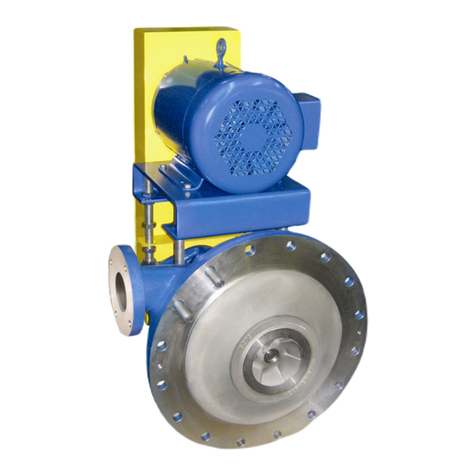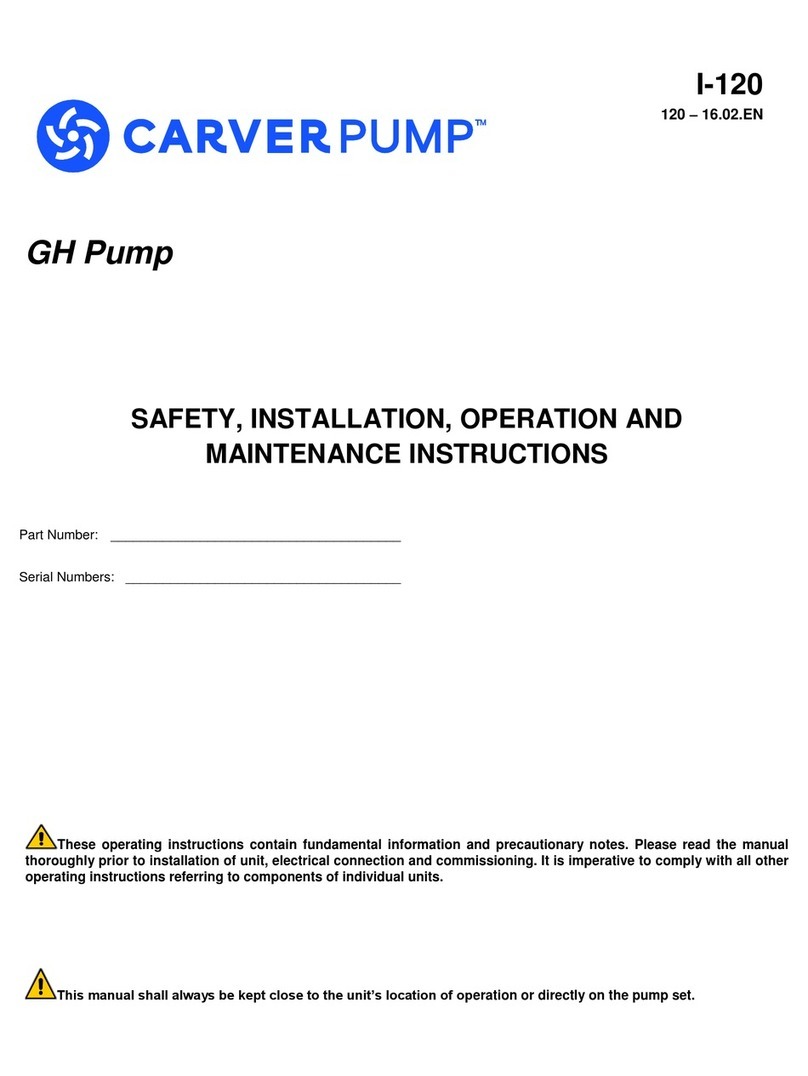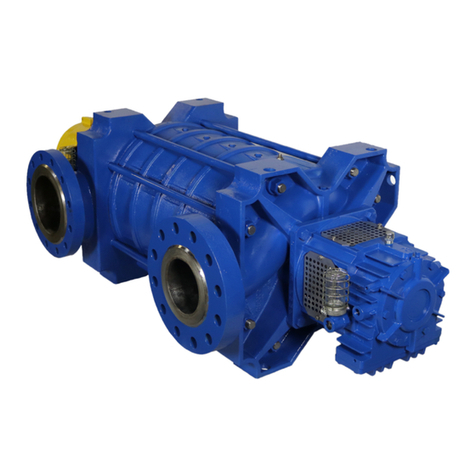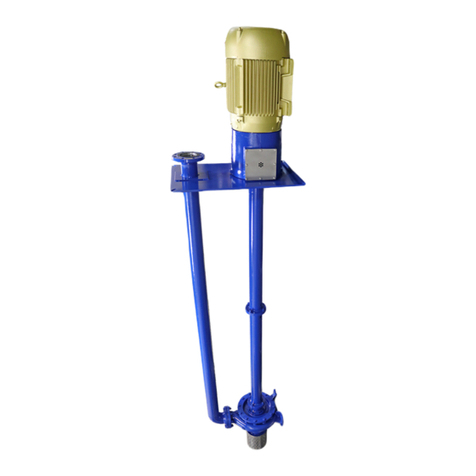
G2C I-461
Cantilevered Sump Pump 461-15.02.EN
2
E. PARTS INVENTORY GUIDE. To avoid
unnecessary delays for maintenance, spare parts
should be readily available, purchase before and keep in
stock, for normal service. Most conditions will be
covered if this manual is followed. For every one to
three pumps, stock one spare set consisting of items
listed in Table 5, Recommended Spare Parts. Part
numbers correspond to Figures 4 and 5.
F. PARTS ORDERING. When ordering replacement
parts, please specify:
Serial number of pump (located on nameplate)
Part name (located on parts list)
Quantity of parts needed
Carver Pump Company may ship an interchangeable
part that is not identical in appearance or symbol. This is
done only if the part has been improved. Examine parts
carefully upon delivery before questioning factory or
company representative. Never return parts to the
factory without authorization from Carver Pump
Company.
If an impeller is ordered, specify diameter across blade
tips. Be sure diameter was NOT trimmed further than
diameter shown on Carver Pump Company records.
If a driver or driver parts are ordered, specify name of
manufacturer and all other data found on the driver
nameplate.
G. SAFETY PRECAUTIONS. The manual is designed
to provide adequate instructions for the safe and
efficient installation, operation, or maintenance of the
pump. Failure or neglect to properly install, operate, or
maintain the pump may result in personal injury,
property damage, or unnecessary damage to the pump.
This manual must be read and understood both by the
installing personnel and the responsible trained
personnel/operators prior to installation and operation,
and it must always be kept close to the location of the
pumping unit for easy access.
G.1 Summary of Safety Marking.
The safety instructions contained in this manual whose
non-observance might cause hazards to persons are
specially marked with the symbol:
General hazard sign to ISO 7000 - 0434.
Notes highlight an operating or maintenance procedure,
condition, or statement which is essential, but is not of
known hazardous nature as indicated by DANGERS,
WARNINGS and CAUTIONS.
The word "CAUTION" is used to introduce safety
instructions whose non-observance may lead to damage
to the machine and its functions.
The word "WARNING" is used to introduce safety
instructions whose non-observance may lead to a
potential hazard exists, capable of producing injury to
personnel, if approved procedures are not followed.
The word “DANGER” indicates a location, equipment, or
system where imminent hazards exist, capable of
producing immediate injury or death to personnel, if
approved procedures are not followed.
Instructions attached directly to the machine, e.g.
Arrow indicating the direction of rotation
Markings for fluid connections must always be
complied with and be kept in a perfectly legible
condition at all times.
Observe all note, caution or danger tags attached to the
equipment or included in this manual.
G.2 Non-compliance with Safety Instructions.
Non-compliance with safety instructions may result in
personal injury, property damage, or unnecessary
damage to the pumping unit. Non-compliance with these
safety instructions will also lead to forfeiture of any and
all rights to claims for damages. Non-compliance, can
for example, result in:
Failure of important pumping unit functions.
Failure of prescribed maintenance and servicing
practices.
Hazard to personnel by electrical, mechanical,
and chemical effects as well as explosion.
Hazard to the environment due to leakage of
hazardous substances.
G.3 Safety Instructions for Maintenance, Inspection,
and installation Work.
The operator is responsible for ensuring that all
maintenance, inspection and installation work be
performed by authorized, qualified personnel who are
thoroughly familiar with the manual and pumping unit.
The pumping unit must have cooled down to ambient
temperature, pump pressure must have been released
and the pump must have been drained before working
on any pumping unit.

































